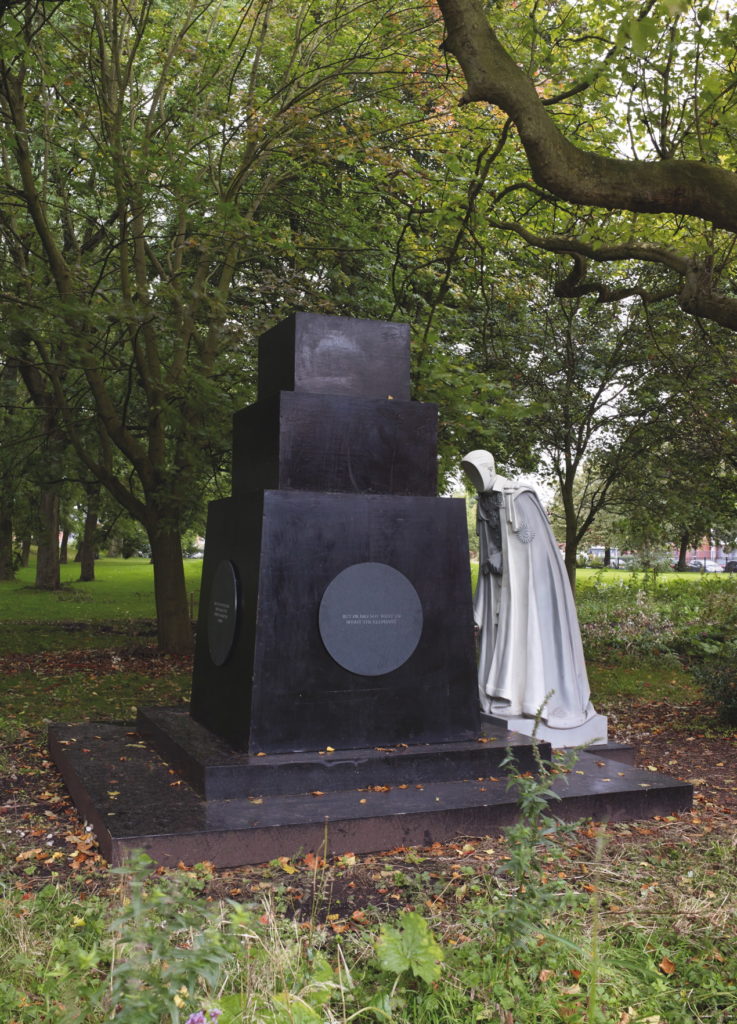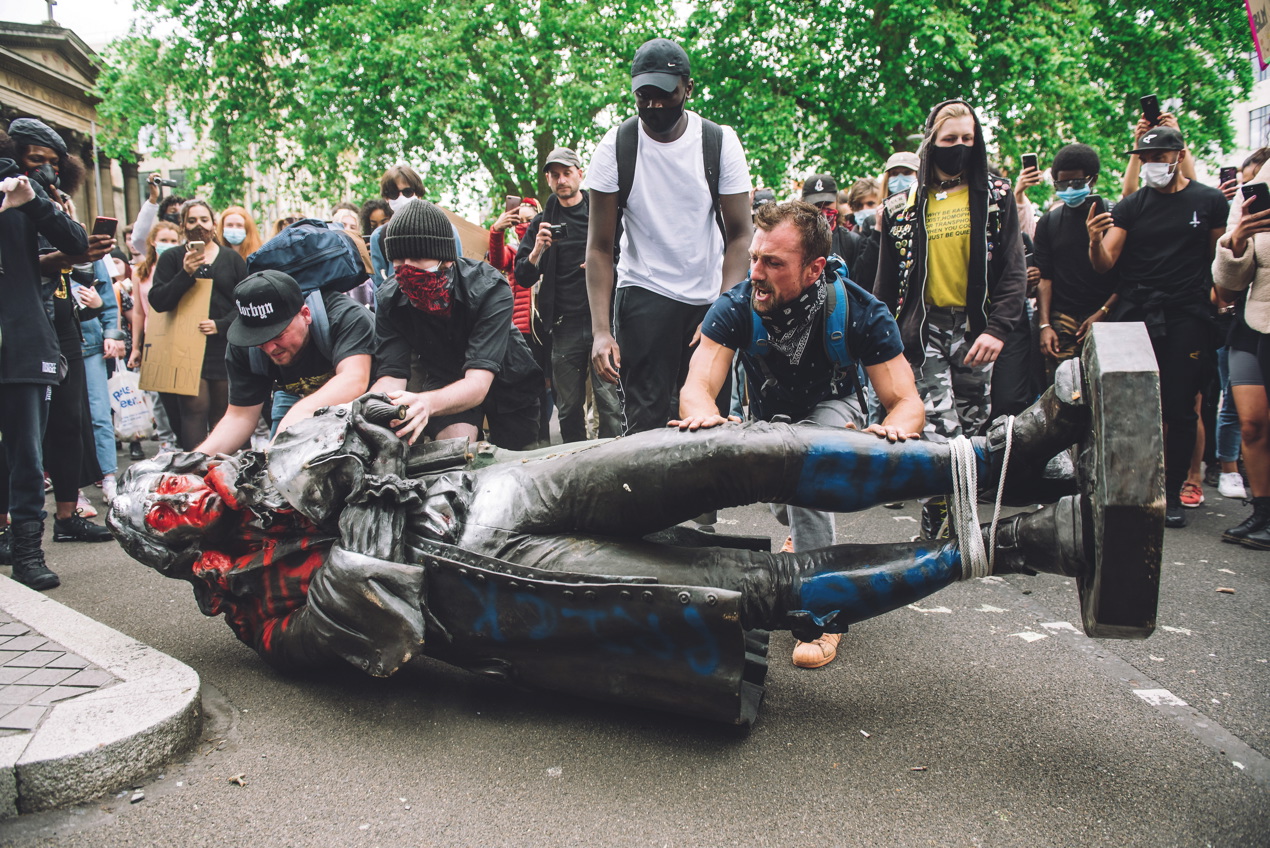In the frame: Bending by Raqs Media Collective
Leanne Green, curator at Whitworth Art Gallery, reflects on power and public monuments amid global protests in support of Black Lives Matter
“We put things on pedestals when we want to look up,” Ralph Northam, governor of Richmond, Virginia, said in response to the decision on 4 June to remove a statue of Confederate General Robert E Lee from the city’s prominent Monument Avenue.
Like hundreds of other monuments to leaders around the globe, Richmond’s dedication to General Lee, a commander of the Confederate states during the American Civil War and supporter of slavery, stood as a symbol of oppression and hate for people of colour in the United States.
A couple of days later and closer to home, in Bristol, demonstrators in support of Black Lives Matter pulled down a long-controversial statue of the slave trader Edward Colston before rolling it into Bristol Harbour. Manchester’s monument to Queen Victoria, placed centrally in Piccadilly Gardens, was used by activists taking advantage of her height to elevate themselves and their message above the crowds that had gathered.
Throughout history, the tearing down of monuments from their plinths has become a powerful media image as protesters seek to literally overthrow their oppressors. The toppling of Saddam Hussein’s statue is an enduring image of the Iraq War. More recently, in 2015 the student-led Rhodes Must Fall campaigning group succeeded in its demand for the removal of a statue of British colonialist Cecil Rhodes from the University of Cape Town campus. Such acts are about history, about who writes it and what stories are told. In Virginia, Northam declared that with the removal of Lee’s likeness, the city would “no longer preach a false version of history”.

As our museums and galleries are closed, public sculpture remains one of the ways that we can access history through art – yet all too frequently, these statues normalise injustice in the past and reinforce the structures of power that they represent. In Whitworth Park, a sculpture by Raqs Media Collective turns this tradition on its head.
Based in New Delhi, Raqs Media Collective is a group of three artists who sit at the intersection between contemporary art and historical inquiry. Bending (2015) is a life-size sculpture, part of a series titled Coronation Park. Unlike the familiar monuments that populate our cities, in Bending a faceless figure has been removed from the plinth and made to kneel at the base. Dressed in a robe of the Order of the Star of India – the most senior order of chivalry associated with the British Empire – it is an image of power deposed, and this is played out in the subject and the material of the sculpture. Although the figure appears to be made of stone, it is actually fibreglass. The plinth, which at a distance looks like granite, is constructed from plywood and painted with bitumen. Like power, from afar the sculpture looks strong but really it is hollow.
Coronation Park refers to a park on the outskirts of New Delhi that hosted mass rallies organised by the British Raj, celebrating the coronation of British monarchs as rulers of India and where Indian subjects were expected to demonstrate deference to their colonial oppressors. Britain withdrew from India in 1947, yet monuments to British rulers remained. In the 1960s, these were removed from New Delhi and relocated to Coronation Park. Today, they stand in disrepair and decay. Once symbolising an oppressive history, their power has been allowed to deteriorate.
As in the removal of Virginia’s monument to General Lee, the toppling of Edward Colston in Bristol and the occupation of Queen Victoria in Manchester, with Bending we are reminded that existing power structures can be challenged and changed. In tearing down the bodies of their oppressors, those once oppressed write the end of history and begin chapters in others.
Images: Bending and the toppling of Edward Colston. Photo: Giulia Spadafora/NurPhoto PA

Leave a reply
Your email address will not be published.